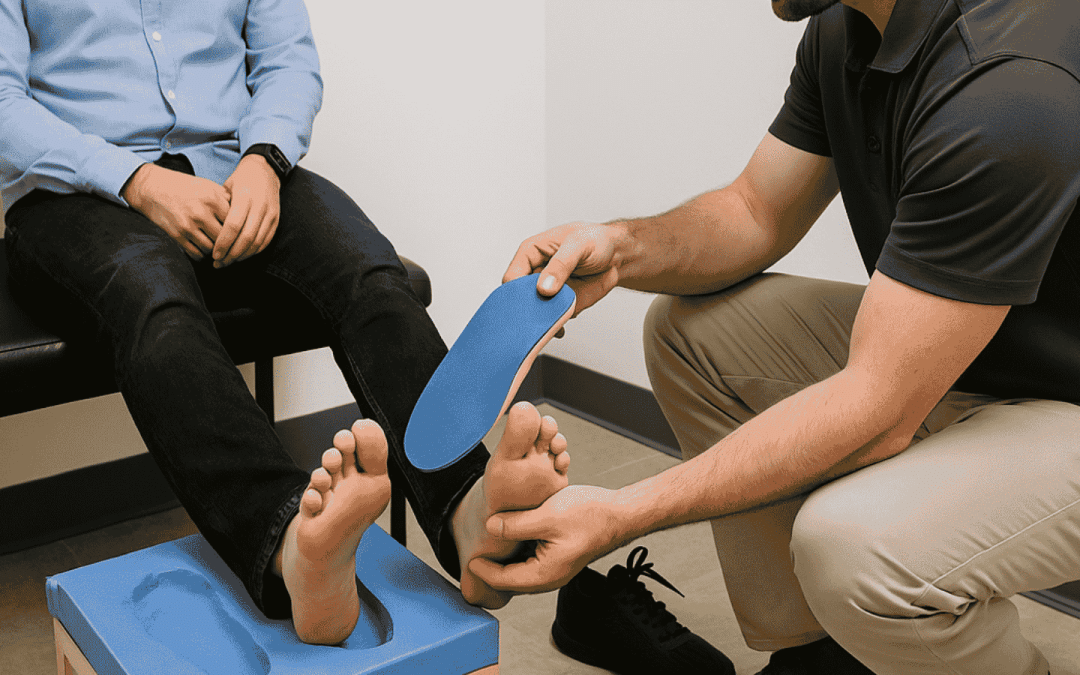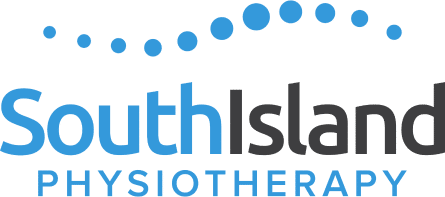
by Colin Beattie | Sep 22, 2025 | news
Chiropractic vs Physiotherapy: Understanding the Differences and Choosing What’s Right for You
When dealing with back pain, neck pain, or joint pain, many people wonder whether to see a physiotherapist or chiropractor. Both disciplines provide hands-on care for disorders of the musculoskeletal system, but they approach pain relief, rehabilitation, and long-term physical function in different ways. This article explores the similarities and key differences between chiropractic and physiotherapy, so you can make an informed decision about which healthcare provider is best for your specific health condition.
What Physiotherapy Focuses On
Physiotherapy (also known as physical therapy) focuses on restoring movement, function, and quality of life. A physiotherapist is trained to assess a wide range of conditions, from sports injuries and knee pain to lower back pain, post-surgical recovery, and neurological conditions.
A physiotherapist will more commonly use:
- Exercise and mobility training
- Soft tissue techniques and manual therapy
- Education and training about posture, ergonomics, and load management
- Progressive physiotherapy treatment plans to improve strength, flexibility, and confidence in movement
In most cases, physiotherapy sessions aim not only to decrease pain but also to address the root cause of the problem by improving overall movement capacity.
What Chiropractic Care Primarily Focuses On
Chiropractic care is a discipline that emphasizes spinal manipulation and other adjustments and manipulations of the musculoskeletal system, particularly the spine. A doctor of chiropractic (chiropractor) is trained to evaluate mechanical disorders of the musculoskeletal system and provide chiropractic services aimed at restoring range of motion and reducing pain and stiffness.
A chiropractor is recommended when patients want hands-on treatment to help with back and neck pain, headaches related to mechanical issues, or certain joint pain conditions.
Chiropractors use chiropractic treatment methods such as:
- Spinal manipulation and mobilization
- Manual therapy for joints and soft tissues
- Advice on exercise and lifestyle modifications
- Short-term treatment plans aimed at pain reduction
Chiropractors and Physiotherapists: A Lot of Overlap
Despite their differences, chiropractors and physiotherapists share many similarities. Both work within the realm of musculoskeletal issues, use hands-on methods like manual therapy, and aim to reduce pain, improve range of motion, and restore physical function. Both also help patients with pain and stiffness return to everyday activities and optimal health. This is why many people are unsure about the difference between physiotherapy and chiropractic or wonder which to choose for a specific health condition.
Key Differences Between Chiropractic and Physiotherapy
Here are the top 5 differences to keep in mind when comparing chiropractic vs physiotherapy:
- Treatment Style
– Chiropractic care primarily focuses on spinal manipulation and joint adjustments and manipulations.
– Physiotherapy focuses more on exercise-based rehabilitation, long-term education and training, and a variety of techniques to restore function.
- Treatment Plan Duration
– A chiropractor is recommended for shorter courses of chiropractic treatment aimed at pain relief and mobility.
– A physiotherapist may build a longer-term plan involving exercises to strengthen muscles and prevent recurrence.
- Education and Training
– A doctor of chiropractic completes chiropractic college, specializing in spinal manipulation and manual therapy.
– A master of physiotherapy program trains physiotherapists in a broad range of conditions, including post-surgical care, sports rehab, and neurological rehabilitation.
- Conditions Treated
– Chiropractic care vs physiotherapy differs in scope: chiropractic care primarily focuses on back and neck pain, while physiotherapy can also address knee pain, post-surgical care, and chronic conditions.
- Approach to Self-Management
– Physiotherapy treatment often emphasizes education, exercise, and prevention.
– Chiropractic services often emphasize hands-on care and manipulation for immediate symptom relief.
Frequently Asked Questions
- Should I see a chiropractor or physiotherapist for lower back pain?
Both can help. A physiotherapist would often design a program with exercises to strengthen your back, while a chiropractor is recommended if you want manual therapy or spinal manipulation to quickly relieve pain and stiffness.
- What’s the difference between chiropractic care and physiotherapy for sports injuries?
Physiotherapy and chiropractic can both treat sports injuries. Physiotherapy sessions often include rehabilitation exercises, while chiropractic services may use manual therapy and adjustments to restore mobility.
- Can physiotherapy and chiropractic care be combined?
Yes. Many patients benefit from a treatment plan that includes both chiropractic and physiotherapy at different stages of recovery, depending on their health condition.
Choosing What’s Right for You
When deciding between chiropractic vs physiotherapy, think about your goals. If you need immediate pain relief from back pain or neck pain, a chiropractor is recommended for spinal manipulation and short-term care. If you want a longer-term plan focused on rehabilitation, education, and exercises to strengthen and prevent recurrence, a physiotherapist will more commonly use the right strategies. For many musculoskeletal issues, combining both physiotherapy and chiropractic care may provide the best balance between quick symptom relief and lasting physical function.
Final Thoughts
Both chiropractic care and physiotherapy services are effective, evidence-based ways to reduce pain and improve movement without pain. The real difference between chiropractic care and physiotherapy lies in emphasis: chiropractors use chiropractic treatment methods like spinal manipulation for rapid relief, whereas physiotherapy focuses on long-term recovery through exercise, education, and rehabilitation. Understanding the differences between chiropractic and physiotherapy helps you choose the right therapist and treatment plan for your health condition—and ultimately return to life with less pain and greater confidence in your body.
At South Island Physiotherapy, we know that every body, and every injury, is unique. Whether you’re seeking quick relief, long-term rehabilitation, or a balance of both, our team is here to guide you toward the care that best fits your needs. By understanding the differences between chiropractic and physiotherapy, you can make an informed choice, and we’ll be here to help you move with confidence every step of the way. Contact South Island Physiotherapy today to schedule your next appointment.

by Colin Beattie | Sep 12, 2025 | news
Dry Needling vs. Acupuncture: Key Differences, Similarities, and When Each Works Best
If you’ve been dealing with musculoskeletal pain, chronic tightness, or stubborn trigger points, you’ve probably heard of dry needling vs acupuncture debates. Both therapies insert needles into specific areas of the body to promote relief from pain, improve range of motion, and enhance recovery. But while they look similar at first glance, the key differences between dry needling and acupuncture lie in their history, intent, and evidence base.
This post will explore the distinctions between dry needling and acupuncture, what the research says about each, and how to decide which may be right for your injury or condition.
What’s the Difference Between Dry Needling and Acupuncture?
At a glance, both methods use thin needles to stimulate the body—but their philosophies and goals are distinct.
- Dry needling is a modern Western medical technique.
- Dry needling is a technique often performed by physical and sports injury therapists or physiotherapists.
- It focuses on inserting filiform needles directly into myofascial trigger points—tight bands of muscle that contribute to pain, stiffness, or movement restriction.
- Dry needling treatment is part of a broader physical therapy approach, often combined with exercise and education.
- Acupuncture is based in traditional Chinese medicine.
- Acupuncture involves inserting acupuncture needles into meridians and energy points believed to influence the body’s flow of “qi.”
- In the West, the use of acupuncture has expanded, and it is now widely studied for pain management, chronic pain, and systemic conditions.
- An acupuncture session is performed by physical therapists in some states but most often by a licensed acupuncturist, certified by the National Certification Commission for Acupuncture and Oriental Medicine (NCCAOM) or similar bodies.
So, dry needling and acupuncture involve very similar needles used, but their intent differs: dry needling treats muscles and trigger points, while acupuncture treats musculoskeletal pain and other conditions through meridian theory.
Needling Techniques: How They Work
- In point dry needling, a needle is inserted directly into a trigger point, sometimes producing a local twitch response.
- Non-trigger point dry needling places needles into specific points around the painful region to restore movement and blood flow.
- Acupuncture and dry needling also differ in the type of needle: both use filiform needles, but acupuncture is performed with different patterns, depth, and locations depending on diagnosis within acupuncture and oriental medicine.
While both needles are used to stimulate tissue, acupuncture may aim to restore energetic balance, whereas dry needling is based on neuromuscular and biomechanical models.
The Evidence: Does It Work?
Evidence for Dry Needling
Research shows that:
- Dry needling can help reduce muscle tension and improve pain and movement issues associated with back pain, neck pain, and sports injuries.
- Meta-analyses suggest that dry needling is more effective than sham treatments for short-term pain relief and improving range of motion.
- However, the effectiveness of dry needling may depend on combining it with part of a broader physical rehabilitation plan.
The American Physical Therapy Association considers dry needling a safe and useful adjunct when performed by physical therapists who are trained and licensed in states that allow physical therapists to perform dry needling.
Evidence for Acupuncture
Studies show that:
- Acupuncture works for chronic pain, particularly acupuncture for osteoarthritis, migraines, and back pain.
- Clinical trials find benefits of acupuncture compared to sham acupuncture, though the effect sizes can be modest.
- The groups for acupuncture worldwide point to its role in reducing reliance on opioids and other drugs for pain management.
- Potential risks of acupuncture are low but may include bruising, dizziness, or infection if not properly sterilized.
Overall, both therapies provide measurable relief from pain, though high-quality studies suggest results are strongest when combined with movement-based rehabilitation.
Which Should You Choose?
When deciding between acupuncture or dry needling, consider your goals:
- Choose dry needling if you’re looking for direct treatment of trigger point-related muscle pain, tightness, or local movement restriction. A dry needling session is often performed by physical therapists and paired with rehab exercises. Dry needling may help athletes and those with sports injuries in particular.
- Choose acupuncture if you want a holistic approach to reduce pain, manage chronic pain, or address systemic concerns alongside pain and muscle tension. Acupuncture currently has broader recognition for conditions like migraines, stress, and acupuncture to reduce osteoarthritis symptoms.
Final Thoughts
So, dry needling vs acupuncture isn’t about which is “better,” but which fits your needs. If you’re looking for relief from pain and movement issues associated with sports injuries or musculoskeletal pain, dry needling is also a strong option—especially when used as part of a larger pain management plan with physical therapy.
Meanwhile, acupuncture is practiced by tens of thousands worldwide, and acupuncture may be the right choice if you prefer a whole-body approach rooted in traditional Chinese medicine.
Both therapies insert needles into specific sites, but their philosophies differ. By understanding the difference between dry needling and acupuncture, you can choose wisely—or even benefit from both.
At South Island Physiotherapy, we believe that pain relief should be more than temporary. It should set the stage for lasting strength and movement. Whether through dry needling, acupuncture, or a tailored rehabilitation plan, our goal is to help you recover, move freely, and feel your best.
If you’re curious about which treatment is right for you, book a consult with a physiotherapist today. Together, we’ll design a plan that supports your recovery and keeps you moving with confidence.

by Colin Beattie | Aug 26, 2025 | news
Comparing Relaxation Massage to Other Types of Massage
In the world of massage therapy, various techniques and styles aim to promote relaxation and alleviate pain. Among these, relaxation massage has gained popularity for its focus on enhancing mental relaxation and providing a sense of calm. This post will explore the benefits of relaxation massage compared to other types of massage, such as Swedish massage, deep tissue massage, and sports massage.
What is Relaxation Massage?
Relaxation massage, often referred to as therapeutic and relaxation massage, employs gentle strokes and techniques to promote relaxation throughout the entire body. It aims to reduce muscle tension and stress, making it an ideal choice for those seeking a calming experience.
Comparing Techniques
Different types of massage therapy utilize various techniques to achieve specific goals. For example:
- Swedish Massage: This type of massage uses long, flowing strokes to improve circulation and promote relaxation. The effects of Swedish massage can be deeply relaxing, often leading to a reduction in stress.
- Deep Tissue Massage: Unlike relaxation massage, deep tissue massage targets deeper layers of muscle and connective tissue. It is particularly effective for chronic pain, including lower back pain, as it focuses on relieving muscle tension.
- Sports Massage: This massage type is designed for athletes and focuses on preventing and treating injuries. It may involve techniques similar to deep tissue massage but is tailored to the needs of active individuals.
- Thai Massage: Incorporating stretching techniques, Thai massage promotes flexibility and relaxation. It often involves the therapist using their body weight to apply pressure to specific points, differing from the more gentle strokes of relaxation massage.
- Hot Stone Massage: This form of massage uses heated stones placed on key points of the body to enhance relaxation. The heat helps to ease muscle tension and promote a sense of well-being.
Effects and Benefits
While each type of massage offers its unique advantages, relaxation massage is particularly effective in promoting relaxation and reducing stress. Studies have shown that massage may help alleviate symptoms of anxiety and depression, contributing to overall mental health.
In contrast, deep tissue massage and sports massage focus more on physical ailments, such as muscle tension and pain relief, especially in specific areas like the lower back. These therapeutic massage techniques can be beneficial for those with chronic pain or muscle injuries.
Conclusion
Choosing the right type of massage depends on individual needs and preferences. For those seeking deep relaxation and a mental escape, relaxation massage is an excellent choice. However, for individuals dealing with specific issues like back pain or muscle tension, exploring other types of massage therapy may provide the targeted relief needed.
Regardless of the chosen therapy, regular massage sessions can significantly enhance overall well-being and promote relaxation, making it an essential part of self-care.
Find the Right Massage for Relaxation, Recovery, and Relief
At South Island Physiotherapy in Victoria, BC, we offer a range of massage therapy options—from relaxation massage to deep tissue, sports, and therapeutic treatments—so you can find the right approach for your needs. Whether you’re looking to reduce stress, recover from injury, or address chronic muscle tension, our skilled Registered Massage Therapists will create a treatment plan that supports your overall health and well-being. Book your massage with us today and experience the benefits firsthand.

by Colin Beattie | Aug 21, 2025 | news
The Role of the Pelvic Floor in Postpartum Recovery
The pelvic floor is a network of muscles, ligaments, and connective tissues that support the pelvic organs—including the bladder, uterus, and rectum—and maintain core stability. During pregnancy and childbirth, these muscles undergo significant strain, making postpartum care and pelvic floor rehabilitation critical for long-term health. Understanding the role of the pelvic floor in postpartum recovery allows women to prevent dysfunction, restore strength, and safely return to exercise and daily activities.
Understanding the Pelvic Floor and Its Function
The pelvic floor muscles form a supportive hammock across the bottom of the pelvis. They work in coordination with the abdominal muscles, diaphragm, and spinal stabilizers to maintain continence, support the pelvic organs, and regulate intra-abdominal pressure. The pelvic floor plays a vital role not only in physical function but also in sexual health and quality of life.
During pregnancy, the growing uterus increases pressure on the pelvic floor, while hormonal changes—particularly the effect of relaxin—cause ligamentous laxity. Childbirth, especially vaginal delivery, further challenges these muscles, sometimes leading to trauma, weakness, or overactivity. This can result in pelvic floor dysfunction, urinary or fecal incontinence, and pelvic organ prolapse, where one or more pelvic organs descend toward or beyond the vaginal canal.
Pelvic Floor Dysfunction and Postpartum Challenges
Pelvic floor dysfunction encompasses a spectrum of pelvic floor disorders, including pelvic organ prolapse, incontinence, and sexual dysfunction. Evidence from systematic reviews shows that up to 50% of women may experience some degree of pelvic floor dysfunction postpartum. Risk factors include vaginal delivery, prolonged labor, instrumental births, multiple pregnancies, and pre-existing abdominal weakness, such as diastasis recti.
Pelvic organ prolapse is one of the most common postpartum pelvic floor disorders. Symptoms can include pelvic pressure, vaginal bulging, urinary or fecal incontinence, and discomfort during sexual activity. While pelvic organ prolapse can affect quality of life, structured postpartum care, particularly pelvic floor muscle training, has been shown to improve outcomes and reduce long-term complications.
The Importance of Pelvic Floor Muscle Training
Pelvic floor muscle training (PFMT) is the cornerstone of postpartum rehabilitation. It involves targeted contractions and relaxations of the pelvic floor muscles to restore strength, endurance, and coordination. Evidence consistently demonstrates that structured PFMT can reduce the incidence of urinary incontinence, enhance pelvic floor function, and prevent the progression of pelvic organ prolapse.
Key principles for effective postpartum pelvic floor exercises include:
- Frequency: Daily practice, ideally multiple times per day.
- Progressive loading: Gradually increasing contraction duration and intensity.
- Integration with abdominal muscles: Engaging the deep core, particularly the transverse abdominis, to support pelvic floor function.
- Functional application: Incorporating contractions during daily activities such as lifting, coughing, or exercising.
Pelvic floor physical therapy guidance ensures exercises are performed correctly, which is particularly important in the early postpartum period when muscles may be weak or coordination may be disrupted.
Pelvic Floor Physical Therapy in Postpartum Rehabilitation
Pelvic floor physical therapy is a specialized form of rehabilitation that addresses postpartum pelvic floor dysfunction. Women are often referred to a pelvic floor physical therapist around 6 weeks postpartum, though early intervention may be indicated in cases of perineal trauma, cesarean section recovery, or symptomatic dysfunction.
A comprehensive assessment typically includes:
- Evaluation of pelvic floor muscle strength, endurance, and coordination.
- Examination of abdominal muscles, including assessment for diastasis recti.
- Assessment of posture, pelvic tilt, and functional movement patterns.
- Screening for pelvic organ prolapse or other pelvic floor disorders.
Based on this assessment, a tailored pelvic floor rehabilitation program is developed. Interventions may include:
- Pelvic floor exercises: Targeted training to improve muscle strength and coordination.
- Manual therapy: Techniques to release tension, address scar tissue, and improve tissue mobility.
- Biofeedback: Visual or auditory feedback to enhance awareness and activation of the pelvic floor muscles.
- Education: Guidance on posture, lifting techniques, and strategies to protect the pelvic floor during daily activities.
- Integration with abdominal rehabilitation: Addressing diastasis recti and coordinating pelvic floor and abdominal muscles to restore core stability.
Abdominal Muscles and Postpartum Recovery
The pelvic floor and abdominal muscles function as an integrated system. Weakness in the abdominal muscles, particularly the transverse abdominis, can increase strain on the pelvic floor, exacerbating dysfunction. Diastasis recti—a separation of the rectus abdominis muscles—is common postpartum and can influence pelvic floor performance.
Rehabilitation programs often include exercises that gently engage the abdominal muscles while supporting the pelvic floor. Examples include:
- Supine pelvic tilts
- Gentle core activation exercises
- Coordinated breathing with pelvic floor engagement
Research shows that combining pelvic floor exercises with abdominal muscle training improves recovery outcomes more effectively than pelvic floor exercises alone. This integrated approach helps restore functional core strength, supports pelvic organs, and facilitates safe return to exercise.
Early Postpartum Care and Rehabilitation
The early postpartum period is a critical window for preventing long-term pelvic floor dysfunction. Initiating care soon after childbirth can enhance recovery, prevent pelvic organ prolapse, and improve continence.
Key recommendations for early postpartum care include:
- Pelvic floor physical therapy assessment: Around 6 weeks postpartum, or sooner if complications occurred.
- Structured pelvic floor exercises: Daily contractions progressing from isolated activation to functional integration.
- Abdominal rehabilitation: Gentle engagement of core muscles to support pelvic floor function.
- Education: Guidance on pelvic tilt, posture, bladder and bowel management, and safe lifting techniques.
- Monitoring and prevention: Awareness of symptoms of pelvic organ prolapse or other pelvic floor disorders.
Prevention and Long-Term Management
Preventing pelvic floor disorders begins during pregnancy and continues postpartum. Evidence-based strategies include:
- Prenatal PFMT: Performing pelvic floor exercises during pregnancy reduces postpartum urinary incontinence and supports muscle function.
- Education during childbirth: Awareness of labor positions, pushing techniques, and perineal support.
- Early postpartum rehabilitation: Structured pelvic floor and abdominal exercise programs during the early postpartum period.
- Regular follow-up: Ensuring correct technique, progression of exercises, and monitoring for pelvic floor dysfunction.
For women experiencing pelvic floor disorders or pelvic organ prolapse, pelvic floor rehabilitation provides a non-surgical treatment option that can restore function and reduce symptoms. Pessary devices or other adjunctive therapies may be used in conjunction with targeted exercises for optimal outcomes.
Return to Exercise and Functional Recovery
A common concern among postpartum women is the timing and safety of returning to exercise. Evidence emphasizes a gradual, guided approach to ensure pelvic floor and abdominal muscles are adequately prepared. Early engagement in high-impact or heavy-resistance activities may exacerbate dysfunction if muscles are not yet fully rehabilitated.
Structured pelvic floor rehabilitation programs facilitate safe reintegration into exercise programs. Women who complete postpartum PFMT and abdominal rehabilitation report improved continence, reduced prolapse symptoms, enhanced functional strength, and greater confidence in returning to pre-pregnancy activity levels.
Conclusion
The pelvic floor plays a central role in postpartum recovery. Pregnancy and childbirth can significantly impact pelvic floor muscles and abdominal support, increasing the risk of pelvic floor dysfunction and pelvic organ prolapse. Evidence-based interventions—including pelvic floor muscle training, pelvic floor physical therapy, and abdominal rehabilitation—are essential for early postpartum care, prevention of long-term disorders, and safe return to exercise.
Women are encouraged to seek guidance from qualified pelvic floor physical therapists to develop individualized programs that address their unique postpartum needs. By integrating pelvic floor exercises, abdominal strengthening, and functional rehabilitation, women can optimize recovery, regain strength, and restore confidence in daily life and physical activity.
Through a structured, evidence-based approach, the majority of postpartum pelvic floor disorders can be prevented or effectively managed, supporting long-term health and quality of life for mothers.
If you’re navigating postpartum recovery, prioritizing your pelvic floor health can make all the difference in preventing dysfunction, restoring strength, and regaining confidence in daily life. At South Island Physiotherapy in Victoria, BC, our specialized team of Registered Physical Therapists, Massage Therapists, Kinesiologists, and Chiropractors provides evidence-based pelvic floor rehabilitation tailored to your unique needs. From targeted pelvic floor muscle training to abdominal strengthening and functional movement support, we’re here to guide you every step of the way. Don’t wait to begin your recovery—contact South Island Physiotherapy today and take the first step toward a stronger, healthier postpartum journey.

by Colin Beattie | Jul 21, 2025 | news
Exploring the Benefits of Custom vs. Off-the-Shelf Orthotics: An Evidence-Based Guide
Orthotics play a crucial role in supporting foot and ankle health, addressing various biomechanical issues, and enhancing overall mobility. Whether you’re an athlete looking to improve performance, someone managing chronic foot pain, or simply seeking better comfort in daily activities, choosing the right type of orthotic can make a significant difference.
The debate between custom orthotics and off-the-shelf (prefabricated) orthotics often centers around effectiveness, cost, and suitability for different foot conditions. This comprehensive guide examines the benefits of each, supported by research and expert recommendations, to help you make an informed decision.
What Are Orthotics?
Orthotics are specialized shoe inserts designed to correct biomechanical imbalances, redistribute pressure, and provide support to the feet, ankles, and lower limbs. They are commonly used to treat conditions such as:
– Plantar fasciitis
– Flat feet (pes planus) or high arches (pes cavus)
– Bunions (hallux valgus)
– Achilles tendonitis
– Shin splints
– Knee, hip, or lower back pain related to foot mechanics
Orthotics can be broadly categorized into two types:
- Custom orthotics – Professionally prescribed and molded to the individual’s foot structure.
2. Off-the-shelf orthotics – Prefabricated, mass-produced inserts available in stores or online.
Each type has distinct advantages depending on the user’s needs.
—
Benefits of Custom Orthotics
Custom orthotics are designed based on a detailed assessment of an individual’s foot structure, gait, and specific medical conditions. Here’s why they are often recommended by podiatrists, physiotherapists, and chiropractors:
- Personalized Fit & Biomechanical Correction
Unlike generic insoles, custom orthotics are crafted using 3D scans, foam impressions, or digital mapping to match the exact contours of the feet. This ensures:
– Optimal arch support tailored to high, low, or neutral arches.
– Precise pressure redistribution, reducing strain on problem areas.
– Improved alignment of the feet, ankles, knees, and hips.
A 2018 study in the *Journal of Foot and Ankle Research* found that custom orthotics significantly improved foot function and reduced pain in patients with plantar fasciitis compared to generic insoles.
- Effective for Complex Foot Conditions
Custom orthotics are particularly beneficial for individuals with:
– Severe overpronation or supination
– Diabetic foot ulcers (to offload pressure points)
– Post-surgical rehabilitation
– Arthritis-related foot deformities
Research published in Clinical Biomechanics (2020) demonstrated that custom orthotics reduced joint stress in rheumatoid arthritis patients, improving mobility and comfort.
- Enhanced Comfort & Durability
Because they are made from high-quality materials (such as rigid polypropylene, semi-rigid thermoplastics, or cushioned EVA foam), custom orthotics:
– Last longer (typically 2-5 years with proper care).
– Provide better shock absorption, reducing fatigue during prolonged standing or walking.
- Improved Athletic Performance & Injury Prevention
Athletes often use custom orthotics to:
– Enhance stability during running, jumping, and cutting movements.
– Reduce overse injuries (e.g., stress fractures, IT band syndrome).
A 2019 study in the *British Journal of Sports Medicine* found that runners using custom orthotics experienced fewer lower limb injuries compared to those using standard insoles.
- Long-Term Cost-Effectiveness
While custom orthotics have a higher upfront cost (typically $300-$800), they often prove more economical over time due to:
– Fewer replacements needed (unlike cheaper OTS insoles that wear out quickly).
– Reduced need for additional treatments (e.g., physical therapy, pain medications).
—
Benefits of Off-the-Shelf Orthotics
While custom orthotics offer superior personalization, off-the-shelf (OTS) orthotics have their own advantages, making them a viable option for many people.
- Immediate Availability & Convenience
– No waiting period (custom orthotics can take weeks to manufacture).
– Easily purchased at pharmacies, sporting goods stores, or online.
- Lower Cost
– Typically priced between $20-$100, making them a budget-friendly choice.
– Ideal for those who want to try orthotics before committing to custom pairs.
- Suitable for Mild to Moderate Conditions
Studies suggest that OTS orthotics can be effective for:
– Mild plantar fasciitis (a 2017 Journal of Orthopaedic & Sports Physical Therapy study found prefabricated insoles reduced heel pain in 70% of participants).
– General arch support needs.
– Temporary relief from foot fatigue.
- Variety of Options
Consumers can choose from:
– Gel-based insoles (for cushioning).
– Rigid arch supports (for overpronation).
– Sport-specific designs (e.g., running, hiking).
—
Custom vs. Off-the-Shelf: Which Should You Choose?
The best choice depends on several factors:
| Factor |
Custom Orthotics |
Off-the-Shelf Orthotics |
| Cost |
Higher ($300-$800) |
Lower ($20-$100) |
| Fit |
Fully personalized |
Generic Sizing |
| Effectiveness |
Best for Severe Conditions |
Good for mild issues |
| Duraability |
2-5 Years |
6-12 months |
| Waiting Period |
2-4 Weeks |
Immediately |
When to Consider Custom Orthotics:
– Chronic foot pain or deformities.
– Diagnosed biomechanical issues (e.g., severe flat feet).
– Active athletes needing precise support.
– Diabetic patients requiring pressure relief.
When Off-the-Shelf May Suffice:
– Mild discomfort or fatigue.
– Temporary use (e.g., while waiting for custom orthotics).
– Budget constraints.
—
Consulting a Healthcare Professional
If you’re unsure which option is best, consulting a physiotherapist, podiatrist, or chiropractor is essential. At clinics like South Island Physiotherapy, specialists can:
– Conduct a gait analysis to identify imbalances.
– Recommend the right type of orthotic based on your activity level and condition.
– Provide adjustments if needed.
—
Conclusion: Making the Right Choice for Your Feet
Both custom and off-the-shelf orthotics offer valuable benefits, but their effectiveness depends on individual needs.
– Custom orthotics provide unmatched support for chronic conditions, complex biomechanics, and long-term foot health.
– Off-the-shelf orthotics are a cost-effective, convenient solution for mild issues or temporary relief.
If you experience persistent pain or mobility limitations, investing in custom orthotics may be worthwhile. However, for general comfort or short-term use, prefabricated insoles can be a practical alternative.
Ultimately, consulting a foot specialist ensures you get the right support—helping you stay active, pain-free, and healthy in the long run.
—
References
– Journal of Foot and Ankle Research (2018).
– Clinical Biomechanics (2020).
– British Journal of Sports Medicine (2019).
– Journal of Orthopaedic & Sports Physical Therapy (2017).





